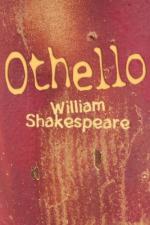|
This section contains 11,364 words (approx. 38 pages at 300 words per page) |

|
SOURCE: Sofer, Andrew. “Felt Absences: The Stage Properties of Othello's Handkerchief.” Comparative Drama 31, no. 3 (fall 1997): 367-93.
In the following essay, Sofer examines the symbolic and thematic significance of the handkerchief in Othello, listing the varying qualities it represents, such as Desdemona's misused honor, Othello's “ocular proof,” the powers of magic, the poetic notion of “felt absences,” and the inescapable “charm of objects.”
Desdemona's handkerchief makes its first appearance in Shakespeare's source, Giraldi Cinthio's Hecatommithi. According to Cinthio, it is “a handkerchief embroidered most delicately in the Moorish fashion, which the Moor had given her [Disdemona] and which was treasured by the Lady and her husband too.”1 Cinthio's handkerchief contains no magic in its web; it is, rather, a crude plot device whose utility depends upon a string of chance events.2 By contrast, there is nothing coincidental in Shakespeare's dramatic embroidering of Cinthio's lurid pulp. In performance, Othello's...
|
This section contains 11,364 words (approx. 38 pages at 300 words per page) |

|


